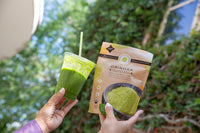
ACNE 101: Defining The 6 Different Types of Acne
By Reena Enjambre | | Acne, Acne 101, beauty, Beauty and Health, clear skin, skin concern, skincare, Types of Acne
Have you ever experienced waking up with a small red bump on your face? At first, it was barely noticeable, so you just didn’t mind it at all and continued with your day. However, on the second day, it started getting bigger--and oftentimes, it’s painful as well. Then eventually you started to get conscious of your face, you put on layers of concealer to hide it and tried different treatments just to get rid of it.
No one likes acne, but if it’s there, what can we really do? Depending on its severity, it can also affect someone’s mental state, causing emotional distress and slowly deteriorate one’s confidence. It gets worse with social media, the videos you see on a daily basis of people having clear and smooth skins.
However, before we get down into the nitty gritty, let us discuss the basics first. Did you know that there is not only one type of acne, but more? In this article, we are going to elaborate and define the number one skin concern almost each and everyone of us is facing, Acne.
Let’s get into it.
- The first two types of acne is developed from a comedo, or basic acne lesion. Comedo is a hair follicle that has become clogged with oil and dead skin cells. Comedones (the plural of comedo) can develop into bumps called whiteheads and blackheads. Products that may trigger comedones are called "comedogenic." Makeup labeled "non-comedogenic" is less likely to clog pores and contribute to acne. Unlike other types of acne, comedones are non-inflammatory, so it is very rare to experience swelling and redness with these types of pimples.
1. CLOSED COMEDONES
In most cases, acne occurs because of clogged pores. So, what are the causes of clogged pores, you asked? Pores get clogged when there is too much oil, bacteria, or skin cell production. Sometimes, as a result of hormonal imbalance or hormonal changes.
Comedones that stay closed at the surface of the skin are called whiteheads. So, whiteheads also known as “closed comedones” are formed when pores get clogged all the way through and are mixed with dead skin cells and sebum. When this happens, the clogged pores are covered by a layer of skin and develop pus within, this causes the white appearance of whiteheads and is also the reason why it is called “whiteheads”.
2. OPEN COMEDONES
The second type of comedonal acne is called “Blackheads” or “open comedones”. The difference between these two types is that blackheads, aside from being black, are also open at the surface--the head of the pore is open while the rest is clogged. Hence, the name blackheads or “open” comedones.
Blackheads are filled with excess oils and dead skin cells. Contrary to what most think, dirt isn’t the one that causes the blackheads to be black, but the exposure of the open pore to oxygen that causes the blemish to turn black.
Unlike whiteheads, blackheads can be extracted by squeezing, but it is not recommended because it might cause scarring when it is not done by a professional.
3. PAPULES
The third type of acne is called Papules. What is a papule? It is a small, hard, red or pink bump on your skin. Sometimes these bumps occur in clusters that feel like sandpaper when touched.
The causes of these papules are oil, bacteria, and dead skin cells building below the surface of the skin, most of the time these papules are inflamed and infected. However, unlike whiteheads, papules don’t contain pus.
4. PUSTULES
After a few days, when not treated, papules graduate to even more noticeable and inflamed blemishes called Pustules.
Pustules are pimples filled with pus. They look a bit similar to whiteheads because they both have a yellowish--or whitish--appearance at the surface, but pustules, on the other hand, have a red ring surrounding the head on the surface of the skin.
Pustules can form anywhere on the body, but they are mostly found in clusters in areas such as your face, chest and back.
5. NODULES
The aforementioned types of acne are not that severe unlike Nodules. Nodules are a more severe type of acne that is also hard to address.
What is Nodular Acne? Nodules or “nodular acne” are large inflamed lesions that feel hard and painful. It is the type of acne that consists of flesh-colored or red bumps that are deep under the skin’s surface, these are due to the infection and irritation of a clogged pore. So, when a hair follicle’s wall is ruptured deep down the dermis, polluted debris enters into the dermis and contaminates neighboring follicles. This then causes swelling on the infected area which is called Nodules.
6. CYSTIC ACNE
Cystic Acne is the most severe and painful type of acne, it also tends to be the largest in size. They are soft, large and pus-filled lesions, similar to boils, beneath the skin’s surface
Cystic Acne is formed similarly--caused by excess oil, dead skin and bacteria-- as nodules, but developed in a more severe and stubborn form. It is developed when a cyst is formed deep underneath your skin.
Cystic Acne poses the most scar risk out of all the types of acne. Cystic Acnes are perhaps most noticeable on a person’s face, but they’re also common on the chest, neck, back, and arms. Cystic acne may even develop on the shoulders and behind the ears.
Acnes can get worse because of these triggers:
Hormonal Changes: Hormonal changes during teens or midlife, specially in women, can cause breakouts. As we grow older, androgens also increases. Androgens are hormones that cause the sebaceous glands to enlarge and produce more sebum.
Certain Medication: There are medications that can trigger or worsen acnes. Examples are containing corticosteroids, testosterone or lithium.
Diet: Yes, your diet can also make your acne worse. Large or often intakes of carbohydrate-rich food like bread, chips and etc. can cause your acne to flare up.
Stress: Stress may not cause acne, but if you're already experiencing some acne, being subjected to a lot of stress can make it worse.
This article is meant to discuss the basics of Acne--defining the different types of Acne. We, the Miracle In The Green Team, hope that we somehow answered your questions regarding the types of acne and its general causes.
In the next article of this Acne 101 series, we will be discussing the other causes of acne, its treatments and what to avoid based on the type of acne that you have.
Stay tuned, Believers.
Love + miracles,

